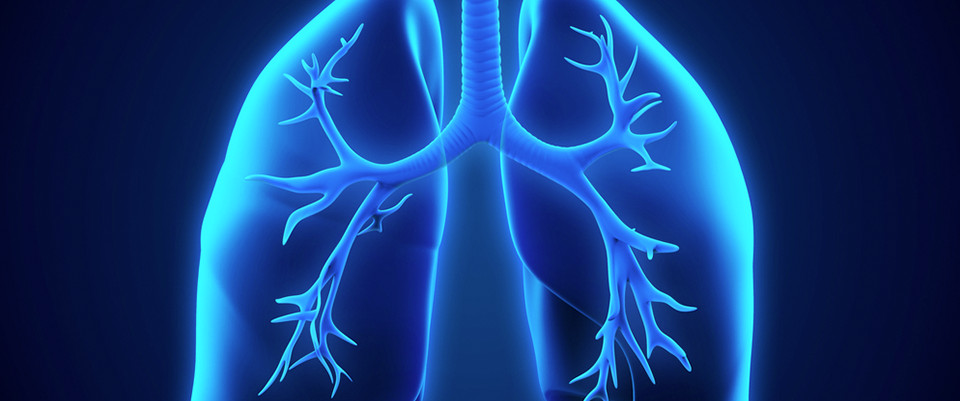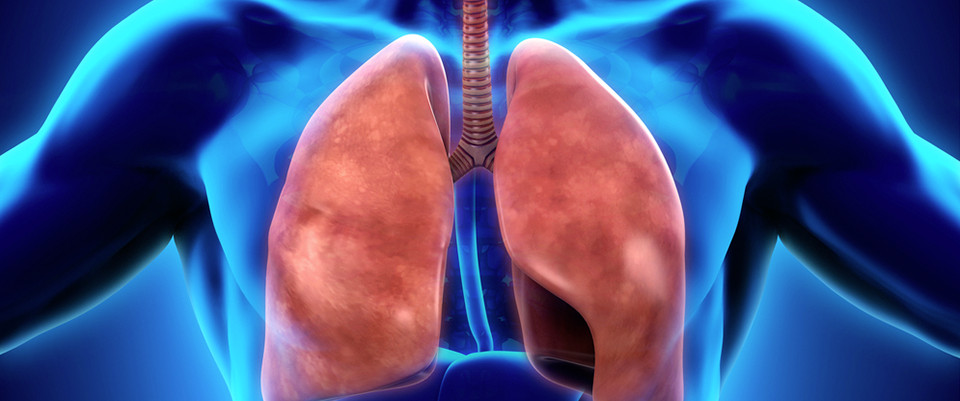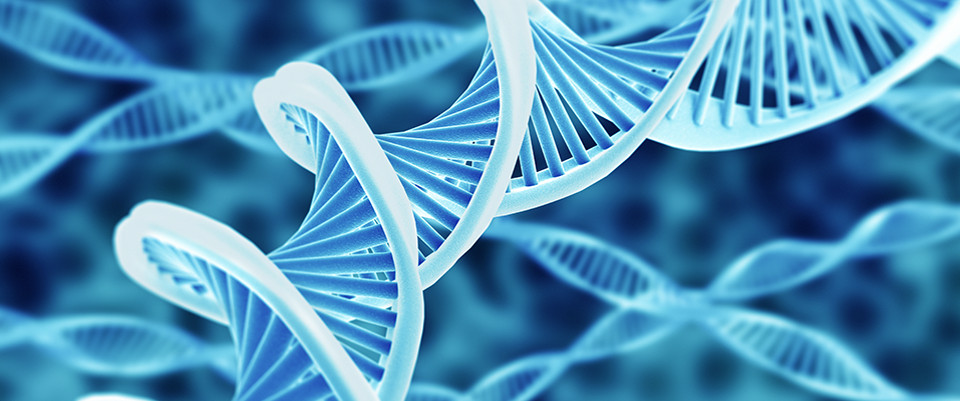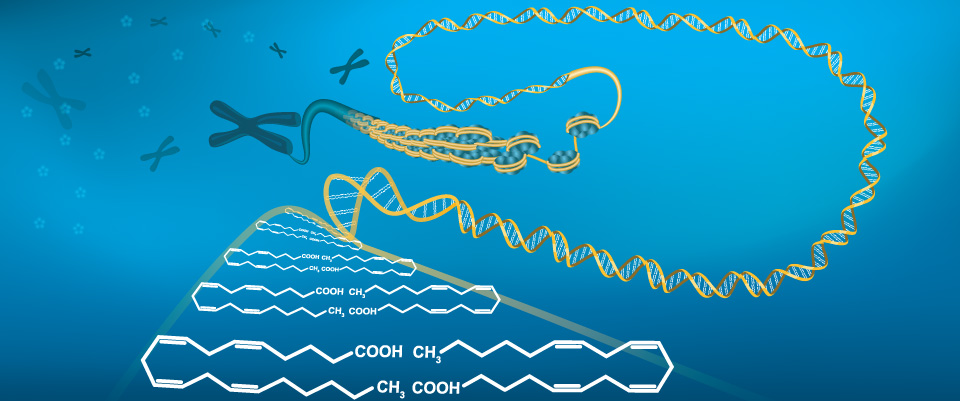PubMed
The holy grail of cystic fibrosis research: pharmacological repair of the F508del-CFTR mutation.
Related Articles
The holy grail of cystic fibrosis research: pharmacological repair of the F508del-CFTR mutation.
Ann Transl Med. 2015 May;3(Suppl 1):S24
Authors: Maiuri L, De Stefano D, Raia V, Kroemer G
PMID: 26046070 [PubMed]
metabolomics; +16 new citations
16 new pubmed citations were retrieved for your search.
Click on the search hyperlink below to display the complete search results:
metabolomics
These pubmed results were generated on 2015/06/05PubMed comprises more than 24 million citations for biomedical literature from MEDLINE, life science journals, and online books.
Citations may include links to full-text content from PubMed Central and publisher web sites.
metabolomics; +18 new citations
18 new pubmed citations were retrieved for your search.
Click on the search hyperlink below to display the complete search results:
metabolomics
These pubmed results were generated on 2015/06/04PubMed comprises more than 24 million citations for biomedical literature from MEDLINE, life science journals, and online books.
Citations may include links to full-text content from PubMed Central and publisher web sites.
Ecotoxicogenomic Approaches for Understanding Molecular Mechanisms of Environmental Chemical Toxicity Using Aquatic Invertebrate, Daphnia Model Organism.
Ecotoxicogenomic Approaches for Understanding Molecular Mechanisms of Environmental Chemical Toxicity Using Aquatic Invertebrate, Daphnia Model Organism.
Int J Mol Sci. 2015;16(6):12261-12287
Authors: Kim HJ, Koedrith P, Seo YR
Abstract
Due to the rapid advent in genomics technologies and attention to ecological risk assessment, the term "ecotoxicogenomics" has recently emerged to describe integration of omics studies (i.e., transcriptomics, proteomics, metabolomics, and epigenomics) into ecotoxicological fields. Ecotoxicogenomics is defined as study of an entire set of genes or proteins expression in ecological organisms to provide insight on environmental toxicity, offering benefit in ecological risk assessment. Indeed, Daphnia is a model species to study aquatic environmental toxicity designated in the Organization for Economic Co-operation and Development's toxicity test guideline and to investigate expression patterns using ecotoxicology-oriented genomics tools. Our main purpose is to demonstrate the potential utility of gene expression profiling in ecotoxicology by identifying novel biomarkers and relevant modes of toxicity in Daphnia magna. These approaches enable us to address adverse phenotypic outcomes linked to particular gene function(s) and mechanistic understanding of aquatic ecotoxicology as well as exploration of useful biomarkers. Furthermore, key challenges that currently face aquatic ecotoxicology (e.g., predicting toxicant responses among a broad spectrum of phytogenetic groups, predicting impact of temporal exposure on toxicant responses) necessitate the parallel use of other model organisms, both aquatic and terrestrial. By investigating gene expression profiling in an environmentally important organism, this provides viable support for the utility of ecotoxicogenomics.
PMID: 26035755 [PubMed - as supplied by publisher]
Comparison of Fruits of Forsythia suspensa at Two Different Maturation Stages by NMR-Based Metabolomics.
Comparison of Fruits of Forsythia suspensa at Two Different Maturation Stages by NMR-Based Metabolomics.
Molecules. 2015;20(6):10065-10081
Authors: Jia J, Zhang F, Li Z, Qin X, Zhang L
Abstract
Forsythiae Fructus (FF), the dried fruit of Forsythia suspensa, has been widely used as a heat-clearing and detoxifying herbal medicine in China. Green FF (GF) and ripe FF (RF) are fruits of Forsythia suspensa at different maturity stages collected about a month apart. FF undergoes a complex series of physical and biochemical changes during fruit ripening. However, the clinical uses of GF and RF have not been distinguished to date. In order to comprehensively compare the chemical compositions of GF and RF, NMR-based metabolomics coupled with HPLC and UV spectrophotometry methods were adopted in this study. Furthermore, the in vitro antioxidant and antibacterial activities of 50% methanol extracts of GF and RF were also evaluated. A total of 27 metabolites were identified based on NMR data, and eight of them were found to be different between the GF and RF groups. The GF group contained higher levels of forsythoside A, forsythoside C, cornoside, rutin, phillyrin and gallic acid and lower levels of rengyol and β-glucose compared with the RF group. The antioxidant activity of GF was higher than that of RF, but no significant difference was observed between the antibacterial activities of GF and RF. Given our results showing their distinct chemical compositions, we propose that NMR-based metabolic profiling can be used to discriminate between GF and RF. Differences in the chemical and biological activities of GF and RF, as well as their clinical efficacies in traditional Chinese medicine should be systematically investigated in future studies.
PMID: 26035103 [PubMed - as supplied by publisher]
A 1H-NMR-Based Metabonomic Study on the Anti-Depressive Effect of the Total Alkaloid of Corydalis Rhizoma.
A 1H-NMR-Based Metabonomic Study on the Anti-Depressive Effect of the Total Alkaloid of Corydalis Rhizoma.
Molecules. 2015;20(6):10047-10064
Authors: Wu H, Wang P, Liu M, Tang L, Fang J, Zhao Y, Zhang Y, Li D, Xu H, Yang H
Abstract
Corydalis Rhizoma, named YuanHu in China, is the dried tuber of Corydalis yanhusuo W.T. Wang which is used in Traditional Chinese Medicine for pain relief and blood activation. Previous pharmacological studies showed that apart from analgesics, the alkaloids from YuanHu may be useful in the therapy of depression by acting on the GABA, dopamine and benzodiazepine receptors. In this study, the antidepressive effect of the total alkaloid of YuanHu (YHTA) was investigated in a chronic unpredictable mild stress (CUMS) rat model using 1H-NMR-based metabonomics. Plasma metabolic profiles were analyzed and multivariate data analysis was applied to discover the metabolic biomarkers in CUMS rats. Thirteen biomarkers of CUMS-introduced depression were identified, which are myo-inositol, glycerol, glycine, creatine, glutamine, glutamate, β-glucose, α-glucose, acetoacetate, 3-hydroxybutyrate, leucine and unsaturated lipids (L7, L9). Moreover, a metabolic network of the potential biomarkers in plasma perturbed by CUMS was detected. After YHTA treatment, clear separation between the model group and YHTA-treated group was achieved. The levels of all the abnormal metabolites mentioned above showed a tendency of restoration to normal levels. The results demonstrated the therapeutic efficacy of YHTA against depression and suggested that NMR-based metabolomics can provide a simple and easy tool for the evaluation of herbal therapeutics.
PMID: 26035102 [PubMed - as supplied by publisher]
Metabolomic Identification of a Novel Pathway of Blood Pressure Regulation Involving Hexadecanedioate.
Metabolomic Identification of a Novel Pathway of Blood Pressure Regulation Involving Hexadecanedioate.
Hypertension. 2015 Jun 1;
Authors: Menni C, Graham D, Kastenmüller G, Alharbi NH, Alsanos SM, McBride M, Mangino M, Titcombe P, Shin SY, Psatha M, Geisendorfer T, Huber A, Peters A, Wang-Sattler R, Xu T, Brosnan MJ, Trimmer J, Reichel C, Mohney RP, Soranzo N, Edwards MH, Cooper C, Church AC, Suhre K, Gieger C, Dominiczak AF, Spector TD, Padmanabhan S, Valdes AM
Abstract
High blood pressure is a major contributor to the global burden of disease and discovering novel causal pathways of blood pressure regulation has been challenging. We tested blood pressure associations with 280 fasting blood metabolites in 3980 TwinsUK females. Survival analysis for all-cause mortality was performed on significant independent metabolites (P<8.9 10(-5)). Replication was conducted in 2 independent cohorts KORA (n=1494) and Hertfordshire (n=1515). Three independent animal experiments were performed to establish causality: (1) blood pressure change after increasing circulating metabolite levels in Wistar-Kyoto rats; (2) circulating metabolite change after salt-induced blood pressure elevation in spontaneously hypertensive stroke-prone rats; and (3) mesenteric artery response to noradrenaline and carbachol in metabolite treated and control rats. Of the15 metabolites that showed an independent significant association with blood pressure, only hexadecanedioate, a dicarboxylic acid, showed concordant association with blood pressure (systolic BP [SBP]: β [95% confidence interval], 1.31 [0.83-1.78], P=6.81×10(-8); diastolic BP [DBP]: 0.81 [0.5-1.11], P=2.96×10(-7)) and mortality (hazard ratio [95% confidence interval], 1.49 [1.08-2.05]; P=0.02) in TwinsUK. The blood pressure association was replicated in KORA and Hertfordshire. In the animal experiments, we showed that oral hexadecanedioate increased both circulating hexadecanedioate and blood pressure in Wistar-Kyoto rats, whereas blood pressure elevation with oral sodium chloride in hypertensive rats did not affect hexadecanedioate levels. Vascular reactivity to noradrenaline was significantly increased in mesenteric resistance arteries from hexadecanedioate-treated rats compared with controls, indicated by the shift to the left of the concentration-response curve (P=0.013). Relaxation to carbachol did not show any difference. Our findings indicate that hexadecanedioate is causally associated with blood pressure regulation through a novel pathway that merits further investigation.
PMID: 26034203 [PubMed - as supplied by publisher]
Identification and characterisation of citrullinated antigen-specific B cells in peripheral blood of patients with rheumatoid arthritis.
Identification and characterisation of citrullinated antigen-specific B cells in peripheral blood of patients with rheumatoid arthritis.
Ann Rheum Dis. 2015 Jun 1;
Authors: Kerkman PF, Fabre E, van der Voort EI, Zaldumbide A, Rombouts Y, Rispens T, Wolbink G, Hoeben RC, Spits H, Baeten DL, Huizinga TW, Toes RE, Scherer HU
Abstract
OBJECTIVES: Immunity to citrullinated antigens is a hallmark of rheumatoid arthritis (RA). We set out to elucidate its biology by identifying and characterising citrullinated antigen-specific B cells in peripheral blood of patients with RA.
METHODS: Differentially labelled streptavidin and extravidin tetramers were conjugated to biotinylated CCP2 or control antigens and used in flow cytometry to identify citrullinated antigen-specific B cells in peripheral blood. Tetramer-positive and tetramer-negative B cells were isolated by fluorescence activated cell sorting (FACS) followed by in vitro culture and analysis of culture supernatants for the presence of antibodies against citrullinated protein antigens (ACPA) by ELISA. Cells were phenotypically characterised by flow cytometry.
RESULTS: By combining differentially labelled CCP2 tetramers, we successfully separated citrullinated antigen-specific B cells from non-specific background signals. Isolated tetramer-positive B cells, but not tetramer-negative cells, produced large amounts of ACPA upon in vitro stimulation. Phenotypic analyses revealed that citrullinated antigen-specific B cells displayed markers of class-switched memory B cells and plasmablasts, whereas only few cells displayed a naïve phenotype. The frequency of tetramer-positive cells was high (up to 1/500 memory B cells with a median of 1/12 500 total B cells) and correlated with ACPA serum titres and spontaneous ACPA production in culture.
CONCLUSIONS: We developed a technology to identify and isolate citrullinated antigen-specific B cells from peripheral blood of patients with RA. Most cells have a memory phenotype, express IgA or IgG and are present in relatively high frequencies. These data pave the path for a direct and detailed molecular characterisation of ACPA-expressing B cells and could lead to the identification of novel therapeutic targets.
PMID: 26034045 [PubMed - as supplied by publisher]
Combining metagenomics with metaproteomics and stable isotope probing reveals metabolic pathways used by a naturally occurring marine methylotroph.
Combining metagenomics with metaproteomics and stable isotope probing reveals metabolic pathways used by a naturally occurring marine methylotroph.
Environ Microbiol. 2015 Jun 1;
Authors: Grob C, Taubert M, Howat AM, Burns OJ, Dixon JL, Richnow HH, Jehmlich N, von Bergen M, Chen Y, Murrell JC
Abstract
A variety of culture-independent techniques have been developed that can be used in conjunction with culture-dependent physiological and metabolic studies of key microbial organisms, in order to better understand how the activity of natural populations influences and regulates all major biogeochemical cycles. In this study, we combined DNA-stable isotope probing with metagenomics and metaproteomics to characterize an as yet uncultivated marine methylotroph that actively incorporated carbon from (13) C-labeled methanol into biomass. By metagenomic sequencing of the heavy DNA, we retrieved virtually the whole genome of this bacterium and determined its metabolic potential. Through protein-stable isotope probing, the RuMP cycle was established as the main carbon assimilation pathway, and the classical methanol dehydrogenase-encoding gene mxaF, as well as three out of four identified xoxF homologues were found to be expressed. This proof-of-concept study is the first in which theculture-independent techniques of DNA- and protein-stable isotope probing have been used to characterize the metabolism of a naturally-ocurring Methylophaga-like bacterium in the marine environment (i.e. M. thiooxydans L4) and thus provides a powerful approach to access the genome and proteome of uncultivated microbes involved in key processes in the environment.
PMID: 26033676 [PubMed - as supplied by publisher]
Metabolome disruption of the rat cerebrum induced by the acute toxic effects of the synthetic cannabinoid MAM-2201.
Metabolome disruption of the rat cerebrum induced by the acute toxic effects of the synthetic cannabinoid MAM-2201.
Life Sci. 2015 May 29;
Authors: Zaitsu K, Hayashi Y, Suzuki K, Nakayama H, Hattori N, Takahara R, Kusano M, Tsuchihashi H, Ishi A
Abstract
AIMS: The aims of this study is to investigate the metabolome disruption in rat cerebrum induced by the recently abused synthetic cannabinoid MAM-2201.
MAIN METHODS: MAM-2201 was intraperitoneally administered to 6-week Wistar rats at 5 or 15 mg/kg (n=5), and the cerebrum metabolome alteration was investigated using gas chromatography/tandem mass spectrometry (GC/MS/MS)-based metabolomics technique.
KEY FINDINGS AND SIGNIFICANCE: MAM-2201 induced oligopnea and hypokinesia at 5 mg/kg dose, while more abnormal symptoms like rotational and seizure-like behaviors were observed at 15 mg/kg dose, suggesting that MAM-2201 induced neurofunctional disruptions. GC/MS/MS detected 72 metabolites in the rat cerebrum. The cerebrum levels of 12 of these metabolites, including intermediates of the tricarboxylic acid cycle (malic acid and succinic acid) and glutamic acid (Glu), were significantly changed in MAM-2201 administered groups compared to the control groups. The synthetic cannabinoid MAM-2201 can disrupt not only glutamatergic neurotransmission but also energy metabolism in the rat cerebrum. Such disruption may contribute to the abnormal symptoms induced by synthetic cannabinoids.
PMID: 26032255 [PubMed - as supplied by publisher]
Metabolomic profiling and genomic analysis of wheat aneuploid lines to identify genes controlling biochemical pathways in mature grain.
Metabolomic profiling and genomic analysis of wheat aneuploid lines to identify genes controlling biochemical pathways in mature grain.
Plant Biotechnol J. 2015 Jun 1;
Authors: Francki MG, Hayton S, Gummer JP, Rawlinson C, Trengove RD
Abstract
Metabolomics is becoming an increasingly important tool in plant genomics to decipher the function of genes controlling biochemical pathways responsible for trait variation. Although theoretical models can integrate genes and metabolites for trait variation, biological networks require validation using appropriate experimental genetic systems. In this study, we applied an untargeted metabolite analysis to mature grain of wheat homoeologous group 3 ditelosomic lines, selected compounds that showed significant variation between wheat lines Chinese Spring and at least one ditelosomic line, tracked the genes encoding enzymes of their biochemical pathway using the wheat genome survey sequence and determined the genetic components underlying metabolite variation. A total of 412 analytes were resolved in the wheat grain metabolome, and principal component analysis indicated significant differences in metabolite profiles between Chinese Spring and each ditelosomic lines. The grain metabolome identified 55 compounds positively matched against a mass spectral library where the majority showed significant differences between Chinese Spring and at least one ditelosomic line. Trehalose and branched-chain amino acids were selected for detailed investigation, and it was expected that if genes encoding enzymes directly related to their biochemical pathways were located on homoeologous group 3 chromosomes, then corresponding ditelosomic lines would have a significant reduction in metabolites compared with Chinese Spring. Although a proportion showed a reduction, some lines showed significant increases in metabolites, indicating that genes directly and indirectly involved in biosynthetic pathways likely regulate the metabolome. Therefore, this study demonstrated that wheat aneuploid lines are suitable experimental genetic system to validate metabolomics-genomics networks.
PMID: 26032167 [PubMed - as supplied by publisher]
LC-MS untargeted metabolomic analysis of drug-induced hepatotoxicity in HepG2 cells.
LC-MS untargeted metabolomic analysis of drug-induced hepatotoxicity in HepG2 cells.
Electrophoresis. 2015 Jun 1;
Authors: García-Cañaveras JC, Jiménez N, Gómez-Lechón MJ, Castell JV, Donato MT, Lahoz A
Abstract
Hepatotoxicity is the number one cause for agencies not approving and withdrawing drugs for the market. Drug-induced human hepatotoxicity frequently goes undetected in pre-clinical safety evaluations using animal models. Human-derived in vitro models represent a common alternative to in vivo tests to detect toxic effects during pre-clinical testing. Most current in vitro toxicity assays rely on the measurement of nonspecific or low sensitive endpoints, which result in poor concordance with human liver toxicity. Therefore, making more accurate predictions of the potential hepatotoxicity of new drugs remains a challenge. Metabolomics, whose aim is to globally assess all the metabolites in a biological sample, may represent an alternative in the search for sensitive sublethal markers of drug-induced hepatotoxicity. To this end, a comprehensive LC-MS-based untargeted metabolite profiling analysis of HepG2 cells, exposed to a set of well-described model hepatotoxins and innocuous compounds, was performed. It allowed to determine meaningful metabolic changes triggered by a toxic insult and gave a first estimation of the main toxicity-related pathways. Based on these metabolic patterns, a PLS-DA model, able to discriminate between nontoxic and hepatotoxic compounds, was constructed. The approach described herein may provide an alternative for animal testing in pre-clinical stages of drug development and a controlled experimental approach to gain a profound understanding of the underlying causes of hepatotoxicity. This article is protected by copyright. All rights reserved.
PMID: 26031481 [PubMed - as supplied by publisher]
[Obesity as pathology of adipocytes: number of cells, volume of arterial bloodstream,local pools of circulation in vivo, natriuretic peptides and arterial hypertension].
[Obesity as pathology of adipocytes: number of cells, volume of arterial bloodstream,local pools of circulation in vivo, natriuretic peptides and arterial hypertension].
Klin Lab Diagn. 2015 Mar;60(3):4-13
Authors: Titov VN, Dmitriev VA
Abstract
The non-specific systemic biological reaction of arterial pressure from the level of organism. vasomotor center and proximal section of arterial bloodstream is appealed to compensate disorders of metabolism and microcirculation in distal section of arteries. This phenomenon occurs in several cases. The primarily local disorders of metabolism at autocrine level, physiological (aphysiological) death of cells, "littering" of intercellular medium become the cause of disorder of microcirculation in paracrin cenosises and deteriorate realization of biological functions of homeostasis, trophology, endoecology and adaptation. The local compensation of affected perfusion in paracrin cenosises at the expense of function of peripheral peristaltic pumps, redistribution of local bloodflow in biological reaction of endothelium-depended vaso-dilation has no possibility to eliminate disorders in realization of biological functions. The systemic increase of arterial pressure under absence of specific symptoms of symptomatic arterial hypertension is a test to detect disorder of biological functions of homeostasis, trophology, biological function of endoecology and adaptation. Allforms of arterial hypertension develop by common algorithm independently from causes of disorders of blood flow, microcirculation in distal section of arteries. The non-specific systemic compensation ofdisorders of metabolism from level of organism, in proximal section of arterial bloodstream always is the same one and results in aphysiological alterations in organs-targets. To comprehend etiological characteristics of common pathogenesis of arterial hypertension is possible in case of application of such technically complicated and still unclear in differential diagnostic of deranged functions modes of metabolomics.
PMID: 26031157 [PubMed - in process]
Multiple mass isotopomer tracing of acetyl-CoA metabolism in Langendorff-perfused rat hearts: channeling of acetyl-CoA from pyruvate dehydrogenase to carnitine acetyltransferase.
Related Articles
Multiple mass isotopomer tracing of acetyl-CoA metabolism in Langendorff-perfused rat hearts: channeling of acetyl-CoA from pyruvate dehydrogenase to carnitine acetyltransferase.
J Biol Chem. 2015 Mar 27;290(13):8121-32
Authors: Li Q, Deng S, Ibarra RA, Anderson VE, Brunengraber H, Zhang GF
Abstract
We developed an isotopic technique to assess mitochondrial acetyl-CoA turnover (≈citric acid flux) in perfused rat hearts. Hearts are perfused with buffer containing tracer [(13)C2,(2)H3]acetate, which forms M5 + M4 + M3 acetyl-CoA. The buffer may also contain one or two labeled substrates, which generate M2 acetyl-CoA (e.g. [(13)C6]glucose or [1,2-(13)C2]palmitate) or/and M1 acetyl-CoA (e.g. [1-(13)C]octanoate). The total acetyl-CoA turnover and the contributions of fuels to acetyl-CoA are calculated from the uptake of the acetate tracer and the mass isotopomer distribution of acetyl-CoA. The method was applied to measurements of acetyl-CoA turnover under different conditions (glucose ± palmitate ± insulin ± dichloroacetate). The data revealed (i) substrate cycling between glycogen and glucose-6-P and between glucose-6-P and triose phosphates, (ii) the release of small excess acetyl groups as acetylcarnitine and ketone bodies, and (iii) the channeling of mitochondrial acetyl-CoA from pyruvate dehydrogenase to carnitine acetyltransferase. Because of this channeling, the labeling of acetylcarnitine and ketone bodies released by the heart are not proxies of the labeling of mitochondrial acetyl-CoA.
PMID: 25645937 [PubMed - indexed for MEDLINE]
GC-MS Based Plasma Metabolomics for Identification of Candidate Biomarkers for Hepatocellular Carcinoma in Egyptian Cohort.
GC-MS Based Plasma Metabolomics for Identification of Candidate Biomarkers for Hepatocellular Carcinoma in Egyptian Cohort.
PLoS One. 2015;10(6):e0127299
Authors: Nezami Ranjbar MR, Luo Y, Di Poto C, Varghese RS, Ferrarini A, Zhang C, Sarhan NI, Soliman H, Tadesse MG, Ziada DH, Roy R, Ressom HW
Abstract
This study evaluates changes in metabolite levels in hepatocellular carcinoma (HCC) cases vs. patients with liver cirrhosis by analysis of human blood plasma using gas chromatography coupled with mass spectrometry (GC-MS). Untargeted metabolomic analysis of plasma samples from participants recruited in Egypt was performed using two GC-MS platforms: a GC coupled to single quadruple mass spectrometer (GC-qMS) and a GC coupled to a time-of-flight mass spectrometer (GC-TOFMS). Analytes that showed statistically significant changes in ion intensities were selected using ANOVA models. These analytes and other candidates selected from related studies were further evaluated by targeted analysis in plasma samples from the same participants as in the untargeted metabolomic analysis. The targeted analysis was performed using the GC-qMS in selected ion monitoring (SIM) mode. The method confirmed significant changes in the levels of glutamic acid, citric acid, lactic acid, valine, isoleucine, leucine, alpha tocopherol, cholesterol, and sorbose in HCC cases vs. patients with liver cirrhosis. Specifically, our findings indicate up-regulation of metabolites involved in branched-chain amino acid (BCAA) metabolism. Although BCAAs are increasingly used as a treatment for cancer cachexia, others have shown that BCAA supplementation caused significant enhancement of tumor growth via activation of mTOR/AKT pathway, which is consistent with our results that BCAAs are up-regulated in HCC.
PMID: 26030804 [PubMed - as supplied by publisher]
Myo-inositol improves the host's ability to eliminate balofloxacin-resistant Escherichia coli.
Myo-inositol improves the host's ability to eliminate balofloxacin-resistant Escherichia coli.
Sci Rep. 2015;5:10720
Authors: Chen XH, Zhang BW, Li H, Peng XX
Abstract
Antibiotic-resistant mechanisms are associated with fitness costs. However, why antibiotic-resistant bacteria usually show increasing adaptation to hosts is largely unknown, especially from the host's perspective. The present study reveals the host's varied response to balofloxacin-resistant Escherichia coli (BLFX-R) using an integrated proteome and metabolome approach and identifies myo-inositol and phagocytosis-related proteins as crucial biomarkers. Originally, macrophages have an optimal attractive preference to BLFX-S due to more polarization of BLFX-S than BLFX-R, which renders faster elimination to BLFX-S than BLFX-R. The slower elimination to BLFX-R may be reversed by exogenous myo-inositol. Primarily, myo-inositol depolarizes macrophages, elevating adherence to both BLFX-S and BLFX-R. Since the altered adherence is equal to both strains, the myo-inositol-treated macrophages are free of the barrier to BLFX-R and thereby promote phagocytosis of BLFX-R. This work provides a novel strategy based on metabolic modulation for eliminating antibiotic-resistant bacteria with a high degree of host adaptation.
PMID: 26030712 [PubMed - as supplied by publisher]
Lactate and energy metabolism during exercise in patients with blocked glycogenolysis (McArdle disease).
Lactate and energy metabolism during exercise in patients with blocked glycogenolysis (McArdle disease).
J Clin Endocrinol Metab. 2015 Jun 1;:jc20151339
Authors: Ørngreen MC, Jeppesen TD, Taivassalo T, Hauerslev S, Preisler N, Heinicke K, Haller RG, Vissing J, van Hall G
Abstract
CONTEXT: Patients with blocked muscle glycogen breakdown (McArdle disease) have severely reduced exercise capacity compared to healthy individuals and suggested not to produce lactate during exercise.
OBJECTIVE: The objectives were to: 1) quantifying systemic and muscle lactate kinetics and oxidation rates and muscle energy utilization during exercise in patients with McArdle disease; 2) elucidate the role of lactate formation in muscle energy production.
DESIGN: Single trial Setting: Hospital Participants: Four patients with McArdle disease and seven healthy subjects.
INTERVENTION: Patients and healthy controls were studied at rest, followed by 40 min of cycle-ergometer exercise at 60% of the patients maximal oxygen uptake (∼35 W).
MAIN OUTCOME MEASURES: Systemic and leg skeletal muscle lactate, alanine, fatty acids and glucose kinetics.
RESULTS: McArdle patients had a marked decrease in plasma lactate concentration at the onset of exercise that remained suppressed during exercise. A substantial leg net lactate uptake and subsequent oxidation occurred over the entire exercise period in contrast to a net lactate release or no exchange in the healthy controls. Despite a net lactate uptake by the active leg, a simultaneous unidirectional lactate release was observed in McArdle patients at rates, which were similar to the healthy controls.
CONCLUSION: Lactate is an important energy source for contracting skeletal muscle in patients with myophosphorylase deficiency. Although McArdle patients had net leg lactate consumption, a simultaneous release of lactate was observed at rates similar to that found in healthy individuals exercising at the same very low workload, suggesting that lactate formation is mandatory for muscle energy generation during exercise.
PMID: 26030324 [PubMed - as supplied by publisher]
Gut Microbiome and Obesity: A Plausible Explanation for Obesity.
Gut Microbiome and Obesity: A Plausible Explanation for Obesity.
Curr Obes Rep. 2015 Jun;4(2):250-261
Authors: Sanmiguel C, Gupta A, Mayer EA
Abstract
Obesity is a multifactorial disorder that results in excessive accumulation of adipose tissue. Although obesity is caused by alterations in the energy consumption/expenditure balance, the factors promoting this disequilibrium are incompletely understood. The rapid development of new technologies and analysis strategies to decode the gut microbiota composition and metabolic pathways has opened a door into the complexity of the guest-host interactions between the gut microbiota and its human host in health and in disease. Pivotal studies have demonstrated that manipulation of the gut microbiota and its metabolic pathways can affect host's adiposity and metabolism. These observations have paved the way for further assessment of the mechanisms underlying these changes. In this review we summarize the current evidence for possible mechanisms underlying gut microbiota induced obesity. The review addresses some well-known effects of the gut microbiota on energy harvesting and changes in metabolic machinery, on metabolic and immune interactions and on possible changes in brain function and behavior. Although there is limited understanding on the symbiotic relationship between us and our gut microbiome, and how disturbances of this relationship affects our health, there is compelling evidence for an important role of the gut microbiota in the development and perpetuation of obesity.
PMID: 26029487 [PubMed - as supplied by publisher]
Understanding the foundations of the structural similarities between marketed drugs and endogenous human metabolites.
Understanding the foundations of the structural similarities between marketed drugs and endogenous human metabolites.
Front Pharmacol. 2015;6:105
Authors: O'Hagan S, Kell DB
Abstract
BACKGROUND: A recent comparison showed the extensive similarities between the structural properties of metabolites in the reconstructed human metabolic network ("endogenites") and those of successful, marketed drugs ("drugs").
RESULTS: Clustering indicated the related but differential population of chemical space by endogenites and drugs. Differences between the drug-endogenite similarities resulting from various encodings and judged by Tanimoto similarity could be related simply to the fraction of the bitstrings set to 1. By extracting drug/endogenite substructures, we develop a novel family of fingerprints, the Drug Endogenite Substructure (DES) encodings, based on the ranked frequency of the various substructures. These provide a natural assessment of drug-endogenite likeness, and may be used as descriptors with which to derive quantitative structure-activity relationships (QSARs).
CONCLUSIONS: "Drug-endogenite likeness" seems to have utility, and leads to a simple, novel and interpretable substructure-based molecular encoding for cheminformatics.
PMID: 26029108 [PubMed]
Type I interferons in anticancer immunity.
Type I interferons in anticancer immunity.
Nat Rev Immunol. 2015 Jun 1;
Authors: Zitvogel L, Galluzzi L, Kepp O, Smyth MJ, Kroemer G
Abstract
Type I interferons (IFNs) are known for their key role in antiviral immune responses. In this Review, we discuss accumulating evidence indicating that type I IFNs produced by malignant cells or tumour-infiltrating dendritic cells also control the autocrine or paracrine circuits that underlie cancer immunosurveillance. Many conventional chemotherapeutics, targeted anticancer agents, immunological adjuvants and oncolytic viruses are only fully efficient in the presence of intact type I IFN signalling. Moreover, the intratumoural expression levels of type I IFNs or of IFN-stimulated genes correlate with favourable disease outcome in several cohorts of patients with cancer. Finally, new anticancer immunotherapies are being developed that are based on recombinant type I IFNs, type I IFN-encoding vectors and type I IFN-expressing cells.
PMID: 26027717 [PubMed - as supplied by publisher]











